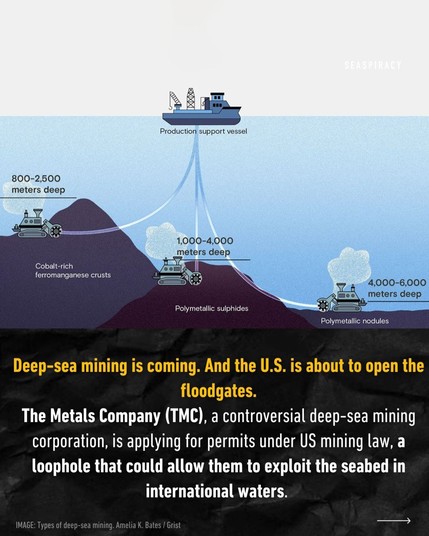#Maine: #Grasses, #Sedges and #Rushes: What’s the Difference?
"When most of us step into our gardens or take a walk in the woods and stumble across a patch of plants with long and slender leaves and large seed heads, we assume we’re looking at a type of grass. However, there’s an enormous amount of diversity in the plant world, and plants that we think are grasses may actually be rushes or sedges. Knowing how to differentiate these plants—collectively known as graminoids—can be a fun exercise in plant identification; it’s also helpful for determining what plants will grow best in your native garden.
"Recently, I had the privilege of attending Jill Weber’s workshop on grass identification, which was organized by Native Gardens of Blue Hill. During the workshop, attendees gained hands-on experience identifying an assortment of native grasses, sedges and rushes, and I wanted to share what I learned with you! In the guide below, we’ll cover some of the key points on grass identification. You’ll also find some suggestions for the best native grasses, sedges and rushes to grow in your own garden.
Grasses, Sedges and Rushes: What’s the Difference?
"Grasses, sedges and rushes may look a lot a like at first glance, but there are a few ways to tell these plants apart. The identification tips below can help you determine what plants are growing in your garden. For more detailed information, you may want to explore the grass ID section on the Go Botany website or consult a quality plant identification book.
Grasses (Poaceae)
"True grasses are found throughout Maine, and throughout the world. Many of our most common grasses are not native to Maine and thrive in sunny and warm locations like fields and abandoned pastures; however, many native grasses are very cold hardy, some prefer wet environments and others grow happily in shade. Interestingly, the majority of our food crops actually belong to the grass family and those include wheat, rice, barley, oats, millet and bamboo!
"A clear way to determine if a graminoid is a true grass is by analyzing its stem and leaf formation. Grasses generally have flattened or rounded stems with pronounced joints or nodes (think bamboo!) Grasses also have 'two ranked' leaves, which means the leaves sprout on two sides of the plant. If you peel a grass blade down from the stem and expose the plant’s papery ligule, you’ll find that many grass ligules are easy to see with a hand lens and can be smooth or ragged on the margin, although some grasses don’t have ligules at all.*
* This is much easier to see with a loupe!
"Some of the most attractive species of true grasses that are native to Maine include:
● #PurpleLovegrass (Eragrostis spectabilis)
● #LittleBluestem (Schizachyrium scoparium)
● #BigBluestem (Andropogon gerardii)
● #DroopingWoodreed (Cinna latifolia)
● #Switchgrass (Panicum virgatum)
Sedges (Cyperaceae)
"Sedges can look a lot like true grasses, and they’re likely to be found in moist soils, although some sedges can tolerate dry conditions. Sedge seed heads are very variable, and some sedges have lots of ornamental appeal.
"The easiest way to determine if a plant is a sedge or not is to feel its stem. Sedge stems are generally triangular in shape and they won’t roll easily between your fingers. The leaves of sedges are typically three ranked, encircling the plant’s stem on three vertical planes. If you peel back a sedge leaf, you’ll notice that their papery ligules are triangular in form, often less noticeable than those of the grasses.
"Sedges can be useful in rain or water gardens, but some sedges can be grown in standard ornamental beds, or even used as a no-mow lawn substitute for small areas.
"If you’re interested in trying out sedges in your landscape, look for these native Maine species:
● #Pennsylvaniasedge (Carex pensylvanica)
● #FoxSedge (Carex vulpinoidea)
● #PointedBroomSedge (Carex scoparia)
● #NoddingSedge (Carex gynandra)
● #TussockSedge (Carex stricta)
Rushes (Juncaceae)
"Like sedges, many rushes and woodrushes prefer moist soil, and some rushes are appropriate for garden planting. Water-loving rushes make spectacular additions to rain gardens or small ponds, or they can be grown in poorly draining sections of your yard where other plants won’t thrive.
"Unlike sedges, rushes have rounded stems, but they lack the nodes that are found in true grasses. Rush flowers can be inconspicuous, but many species can hold their own in any flower garden. Rush leaves typically sprout from the base of the plant and encircle the plant’s stems; however, rushes can be varied and particular species may have different leaf formations.
"If you’re on the hunt for rushes to try in water features or in ornamental beds, these Maine natives are a great place to start:
● #SoftRush (Juncus effusus)
● #CommonWoodrush (Luzula multiflora)
● #WireRush (Juncus balticus)
● #CanadaRush (Juncus canadensis)
● #HairyWoodrush (Luzula acuminata)
How to use #graminoids in the landscape
"Grasses, sedges and rushes offer a lot of benefits to the home gardener. Not only are graminoids beautiful, but their seed heads can provide an important food source for wild birds in late summer, autumn and winter. When interplanted with other native #perennials, graminoids provide texture to gardens, as well as movement when their leaves catch in the breeze. Many graminoids also stay upright during winter, providing winter interest and habitat for wildlife. And, not to be overlooked, graminoids are also useful for #basketweaving if you’re interested in crafting!
"On a larger scale, graminoids serve as #CarbonSinks and they help to counter climate change by absorbing carbon dioxide from the atmosphere. Some graminoids are useful for erosion control or for #bioremediation projects. In wetland areas, grasses, rushes and sedges can aid with #WaterFiltration, and they provide habitat and food for various #wildlife species.
"When growing graminoids in your garden, make sure you consider the plant’s specific light, water and soil requirements. Some grasses are more suitable for gardens than others and offer a variety of leaf color, stiffness, height and seed characteristics. Rushes and sedges can be essential additions to rain gardens and other water features. Many native graminoids are spectacularly low maintenance, and they need very minimal water once established. Growing them in your garden or replacing some of your turf grass lawn with native ornamental grasses, sedges and rushes can cut down your lawn maintenance needs and also make your garden that much more #EcoFriendly!"
https://www.nativemainegardens.org/single-post/grasses-sedges-and-rushes-what-s-the-difference
#SolarPunkSunday #GardeningForBirds #Rewilding #Grasslands



